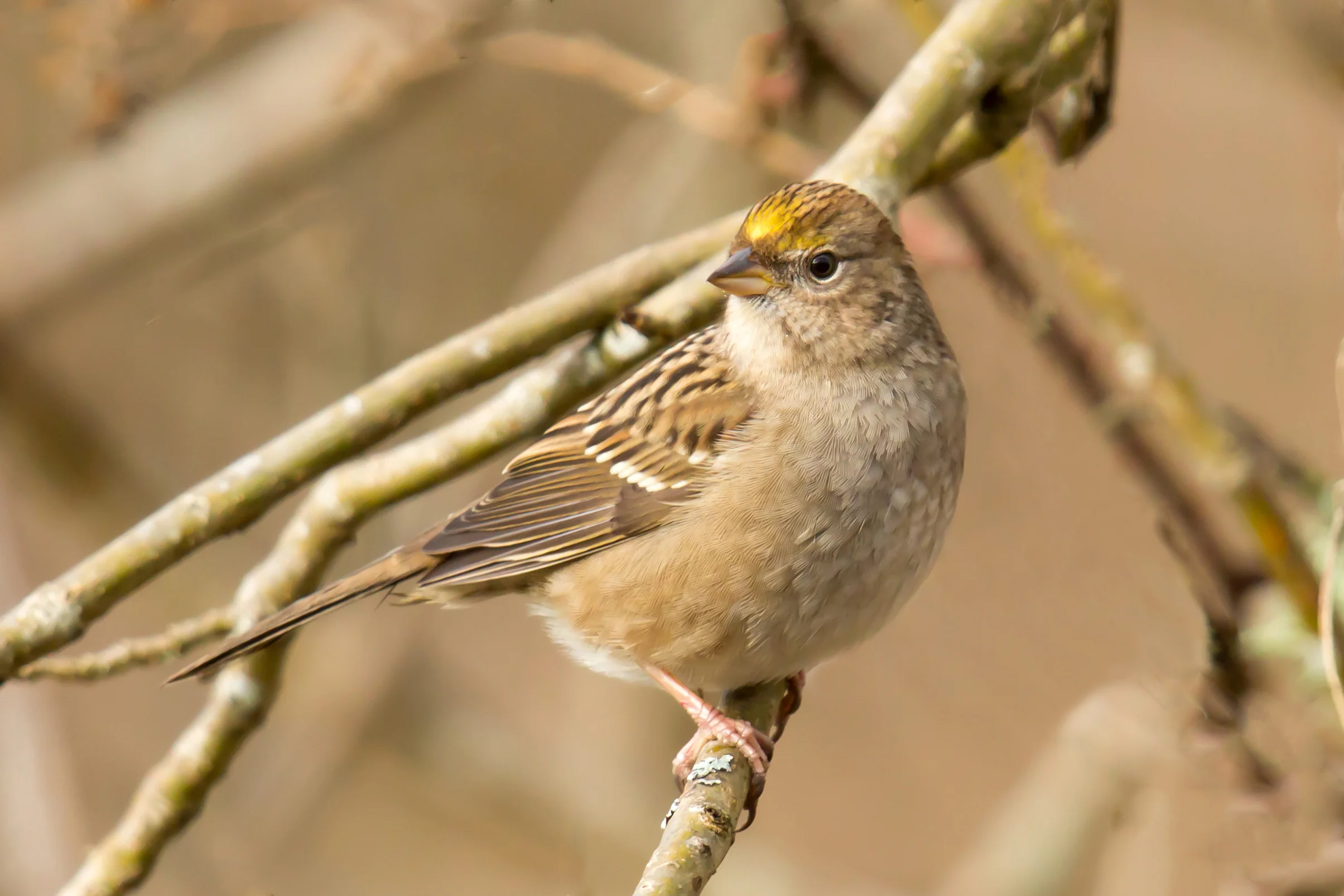The Rhinoceros Auklet is named for the horn at the base of its bill. It is in the genus cerorhinca (horn-nose) from the Greek keras, horn, and rugkhos, snout.
Glaucous-winged Gull, Western Gull, Herring Gull
Marsh Wren
MacGillivray's Warbler
As with many of our western birds this warbler is named after human beings. John James Audubon named it in honor of the Scottish ornithologist Wiliam MacGillivray who authored the 5-volume History of British Birds (1837-1851). However, it was later learned that John Townsend (of Townsend’s Warbler and Townsend’s Solitaire) had named it for William Tolmei, a physician who worked for Hudson Bay Company.
Golden-crowned Sparrow
Marbled Godwit
The Marbled Godwit (MAGO) is about 18" long with a 29" wingspan and weighs 13 oz. (370g). The genus name Limosa (lie-MOH-sah) is from the Latin limus, meaning "muddy," for its favorite habitat, mudflats. The species name fedoa (FED-oh-ah) is the Latin version of an old and now unknown English word meaning "marbled." - for its mottled plumage.
Red-Tailed Hawk
The Red-tailed Hawk (RTHA) is a member of the buteo family of high flying hawks and its length varies from 19-25". The genus name Buteo is from the Latin for a kind of falcon or hawk. The species name jamaicensis is Latin for island of Jamaica, West Indies, where the first scientific specimen came from.
Mew Gull, Ring-billed Gull, California Gull
Hairy Woodpecker
A bird of the forest that loves large trees, the Hairy Woodpecker is an exciting bird to see. It is often found hammering on the trunk or tree limb in search of larvae of wood-boring beetles, other beetles, ants and other larvae. It will also eat some berries and nuts, and feed at the sap sites of sapsuckers.
Palm Warbler
The Palm Warbler is one of Washington’s “Winter Warblers.” In late fall and winter, with numbers varying considerably each year, Palm Warblers migrate south along the Pacific Coast through Washington, Oregon and California. In recent years Palm Warblers have been seen in Ocean Shores and on the Seattle campus of the University of Washington.
Bushtit
Savannah Sparrow
The Savannah Sparrow (SASP) is 5.5" long with a 6.75" wingspan. The genus name Passerculus is from the Latin meaning little sparrow. The species name sandwichensis is Latin, of place, Sandwich, Unalaska, or Aleutians area, from which came the first subspecies, Aleutian Savannah Sparrow, to be described.
Western Sandpiper
The Western Sandpiper is part of the genus Calidris from the Greek kalidris which was used by Aristotle for a speckled waterbird. Mauri is from Ernest Mauri (1791-1836) an Italian botanist and a friend of Charles Bonaparte (1803-1857), who named this bird for him. They co-authored a book on Italian fauna. The bird is the western counterpart to the Semipalmated Sandpiper Calidris pusilla and the common name designates this location.






















